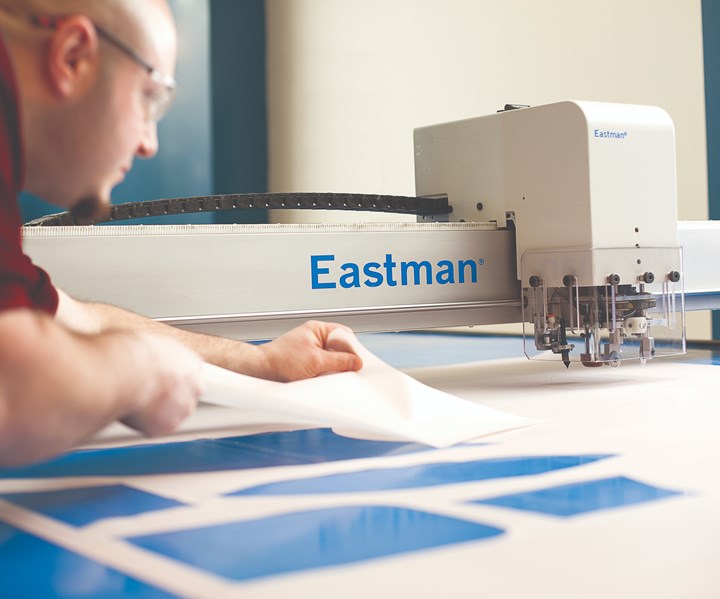Eastman Machine's customers shift gears to fight pandemic
Customers using cutting tables to fabricate composite parts and structures are turning to Eastman to retrofit for processing medical-grade fabrics.

Eastman Machine (Buffalo, N.Y., U.S.) is well known in the composites industry as a global manufacturer of cutting tables used to cut glass and carbon fiber fabrics for use in the fabrication of a variety of parts and structures for aerospace, automotive, wind energy and other end markets.
During the coronavirus pandemic, as non-essential manufacturing was put on hold by local and national governments, Eastman CEO Robert Stevenson says he expected an associated slowdown in the company’s activity. In fact, says Stevenson, Eastman had to petition the State of New York for a waiver to remain open. “I thought our role in all of this would be minor,” Stevenson says. “I was wrong.”
What Stevenson was wrong about was a burgeoning desire among Eastman’s customers to be a part of the solution to material and supply shortages facing the global healthcare industry — the masks, caps, gowns, shields and tents required to treat patients suffering from COVID-19.
Eastman has been contacted by existing customers — many of them composites fabricators — from the U.S., Northern Ireland, Spain and other countries who are looking for guidance on how to adapt their cutting tables to cut medical-grade materials. Adapting an Eastman machine to do this, Stevenson says, requires addressing two components of a cutting table. First, the cutting surface must be replaced so as to avoid contaminating the medical-grade textiles. Second, a different tool spindle or blade configuration — effective for cutting medical-grade materials — likely must be chosen, along with different tool speeds and pressures. Eastman says many of its customers in the composites industry already have the tool spindles required for medical-grade materials, thus addressing this need is usually not difficult.
“We’ve been much busier than expected,” Stevenson says. “It’s really gratifying to be a part of something like this.”
Related Content
-
Composite innovations feature automotive, water sports, UAV and consumer project versatility
JEC World 2025: Precision, performance and reliability are at the core of Cobra International’s display, involving a front end, portfolio of water sports applications, a fixed wing drone and more.
-
Generative Orthoses project to reshape orthopedic care
CRP Technology, MHOX and Istituto Ortopedico Rizzoli, one of the winners of the WORTH Partnership Project II, have developed bespoke orthoses using generative design, Windform GT fiberglass materials and PBF.
-
Korean researchers develop 3D printed CNT sensors for health monitoring, flexible electronics and smart textiles
CNT-based nanocomposites are optimized specifically for vat photopolymerization-type 3D printing, maintaining high stretchability and electrical conductivity.






